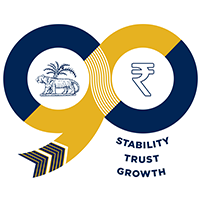 IST,
IST,
The Reserve Bank - Integrated Ombudsman Scheme, 2021
Ans. ATMs set up, owned and operated by non-banks are called WLAs. Non-bank ATM operators are authorised under the Payment & Settlement Systems Act, 2007 by the Reserve Bank of India (RBI). The list of authorised WLA Operators is available on the RBI website at the link https://rbi.org.in/web/rbi/payment-and-settlements/other-links/information-useful-to-banks-fis/payment-system-operators
Ans. Yes, KYC is mandatorily required to be carried out:
- at the time of commencement of an account-based relationship, i.e., opening any type of account with the RE; or
- when a walk-in-customer carries out occasional transaction of an amount equal to or exceeding ₹50,000 (whether conducted as a single transaction or several transactions that appear to be connected); or
- when a walk-in-customer carries out any international money transfer operations; or
- when the RE has a doubt about the authenticity or adequacy of the customer identification data it has obtained; or
- when the RE sells its own products or third party products as an agent; payment of dues of credit cards/ sale and reloading of prepaid/ travel cards and any other product for more than ₹50,000.
Response: Resident Indians [Individuals, HUFs, Proprietorship & Partnership firms, Trusts including Mutual Funds/Exchange Traded Funds registered under SEBI (Mutual Fund) Regulations, Companies, charitable institutions, Central Government, State Government or any other entity owned by Central Government or State Government].
Ministry of Micro, Small and Medium Enterprises, Government of India has launched the Udyam Assist Platform (UAP) to facilitate formalisation of Informal Micro Enterprises (IMEs) through online generation of Udyam Assist Certificate. Ministry of MSME has defined IMEs as those enterprises, which on the basis of their turnover, are exempted from filing returns under the provisions of the Central Goods and Services Tax Act, 2017.
The UAP is managed by SIDBI wherein registration of enterprises on the platform is done with the assistance of Designated Agencies which are RBI regulated entities (including scheduled commercial banks, non-banking financial companies, etc.). The certificate issued on UAP to IMEs is treated at par with URC for the purpose of availing PSL benefits. IMEs with an Udyam Assist Certificate are treated as micro enterprises for the purpose of PSL classification. (Refer Master Direction FIDD.MSME & NFS.12/06.02.31/2017-18 dated July 24, 2017 and circular FIDD.MSME & NFS.BC.No.09/06.02.31/2023-24 dated May 09, 2023)
Financial Sector regulators/ authorities in India have established regulatory sandboxes to foster innovation in their respective domains. These include:
-
Reserve Bank of India (RBI)
Link: https://rbi.org.in/web/rbi/-/publications/reports/enabling-framework-for-regulatory-sandbox -
Securities and Exchange Board of India (SEBI)
Link: https://www.sebi.gov.in/legal/circulars/jun-2021/revised-framework-for-regulatory-sandbox_50521.html -
Insurance Regulatory and Development Authority of India (IRDAI)
Link: https://irdai.gov.in/document-detail?documentId=6541188 -
International Financial Services Centres Authority (IFSCA)
Link:https://ifsca.gov.in/Viewer?Path=Document%2FLegal%2Ffe-framework_27-04-202227042022122844.pdf&Title=Framework%20for%20FinTech%20 Entity%20in%20the%20International%20Financial%20Services%20Centres%20%28IFSCs%29&Date=27%2F04%2F2022 -
It may be noted that Pension Fund Regulatory and Development Authority (PFRDA) currently does not have its own regulatory sandbox.
Ans. RTGS offers many advantages for funds transfer:
-
It is a safe and secure system for funds transfer.
-
RTGS transactions / transfers have no amount cap set by RBI.
-
The system is available on all days on 24x7x365 basis. There is real time transfer of funds to the beneficiary account.
-
The remitter need not use a physical cheque or a demand draft.
-
The beneficiary need not visit a bank branch for depositing the paper instruments.
-
The beneficiary need not be apprehensive about loss / theft of physical instruments or the likelihood of fraudulent encashment thereof.
-
Remitter can initiate the remittances from his / her home / place of work using internet banking, if his / her bank offers such service.
-
The transaction charges have been capped by RBI.
-
The transaction has legal backing.











